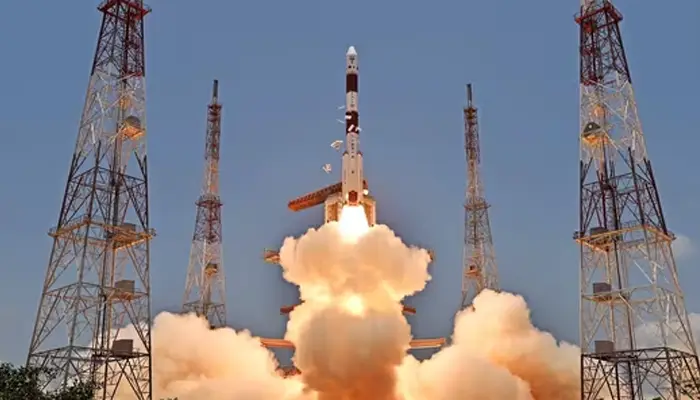
In the beginning, it began as a race between two superpower, while more 50 nations are currently functional in space exploration, boosting overall economy.
India’s space program transcends the boundaries. With multiple successful cost-effective missions ISRO contributed significantly to various sectors, promoting economic growth, technological innovation, and job creation.
The Indian Space Research Organisation (ISRO) has successfully conducted the landing experiment of its Reusable Launch Vehicle (RLV) named ‘Pushpak’ today.
In this article, we will explore how ISRO’s space exploration is supporting Indian economy.
Among many, following are key reasons behind India's growth in space economy.
Over the years, ISRO has mastered in executing low-budget space mission. ISRO has spent approximately 600 crores behind successful Chandrayaan-3 mission, which is much lower compared to lunar mission by other countries. This was accomplished by in-house research, and developing indigenous technologies.

ISRO doesn't have to solely depend on foreign investments for any project. Indian government provides the major fundings for ISRO projects. This helped them planning missions at a modest budget also.
ISRO generates a good amount of revenue via its commercial arm named Antrix Corporation. It also provides satellite launch services globally, that help them generating substantial cost for further research and development.
Telecommunications:
ISRO’s advanced satellite-based communication systems have truly revolutionized connectivity, enabling telecommunication, internet access along with broadcasting in remote areas. This further promotes economic growth.
Navigation Services:
India’s regional navigation satellite system named NavIC, enhances navigation, transportation, as well as logistics, that contributes to economic development.

Earth Observation Satellite:
ISRO has multiple Earth observation satellites providing essential data before any climatic disaster. This optimizes resource allocation and consequent economic growth.
Emerging Ventures:
With a growth in space economy, associated ventures are also experiencing a hike. This starts with space tourism, which has a potential to grow into a lucrative industry. India's space mission is also opening the doors for future resource utilization, driving economic growth.
Expert's Words:
Dr Jitendra Singh Union Minister said: “The current size of the Indian Space Economy is estimated around $8.4 billion (around 2-3% of global space economy) and it is expected that with the implementation of the Indian Space Policy 2023, $44 billion Indian space economy can be achieved by the year 2033. The role of the private sector will be prime to achieve the expected economy figure. It is expected that private sector will take up independently end to end solution in satellite manufacturing, launch vehicle manufacturing, provide satellite services, and manufacture ground systems.”
He further mentioned: “In order to promote Foreign Direct Investment (FDI) in Space Sector, the Department of Space in consultation with DPIIT is in the process of reviewing the FDI policy guidelines of space sector.”
Dr. Pawan Goenka, chairman, IN-SPACe said, “Our strategy fosters an era of collaboration between all stakeholders to accelerate growth. ISRO is opening its doors wider than ever to private sector participation, so that together, we can successfully boost the space economy for a resurgent Aatmnirbhar Bharat.”

IN-SPACe, the single-window, autonomous, nodal agency under the Department of Space predicted: “India’s space economy has the potential to reach ₹35,200 crore ($44 billion) by 2033 with about 8% of the global share. At present, the share of the domestic market is ₹6,400 crore ($8.1 billion). The export market share is ₹2,400 crore ($0.3 billion). The aim is to increase the domestic share to ₹26,400 crore ($33 billion), and the export share to ₹88,000 crore ($11 billion).”
In last 10 years, Space Start-Ups have gone from 1 to 189 which led to increased funding, nearly $ 124.7 Million in 2023.
With the effective strategies and proper investments, India’s space economy could achieve rapid growth, unleashing a brighter future for the country.